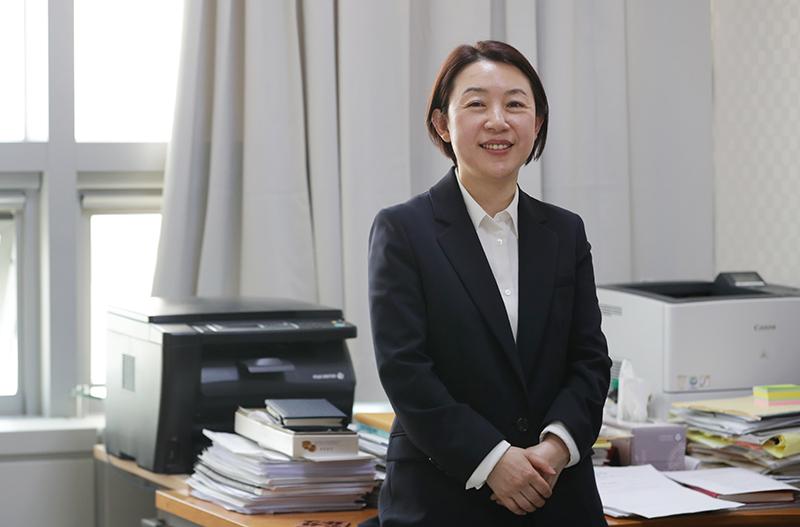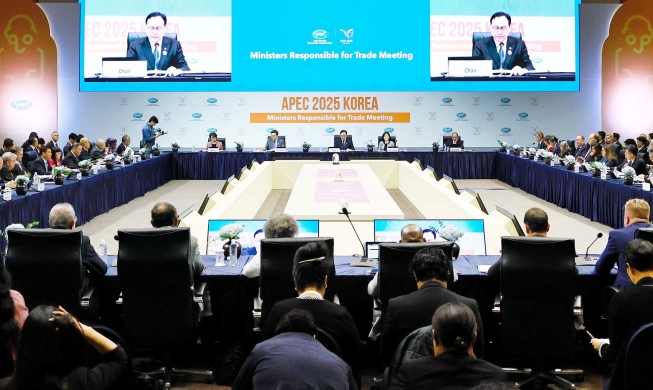
Epidemiology professor Ki Moran chairs the novel coronavirus disease (COVID-19) policy committee of the Korean Society for Preventive Medicine. She is shown here on April 27 giving an interview to Korea.net at the National Cancer Center in Goyang, Gyeonggi-do Province.
By Kim Young Deok, Cho Su Yeon and Lee Jihae
Photos = Kim Sunjoo
Goyang | April 27, 2020
The Central Disease Control Headquarters on April 28 said the number of newly confirmed patients of the novel coronavirus disease (COVID-19) that day was 14, marking the 100th day since the nation's confirmation of the first patient.
The figure dropped to around a tenth of the 146 confirmed cases reported on March 28.
"We cannot be reassured yet, but we've reached this point because the people participated well (in social distancing),” said Ki Moran, a professor of epidemiology at the National Cancer Center's Graduate School of Cancer Science and Policy.
Even after society shifts from social distancing to the laxer system of lifestyle quarantine, people must continue social distancing in their lives to prevent the disease, she said.
Ki also chairs the COVID-19 policy committee of the Korean Society for Preventive Medicine. At the center on April 27 in Goyang, Gyeonggi-do Province, she told Korea.net in an interview about the country's global role in the pandemic and the government's response to COVID-19 over the past 100 days.
How do you evaluate social distancing in Korea, which was implemented about a month ago?
The number of confirmed people has fallen. There are about 10 newly confirmed patients a day, about half of whom are imported (from abroad). We cannot be assured yet but we've reached this point because the people participated well (in social distancing). Catholic Mass and Buddhist services that resumed last week showed efforts to properly abide by the seven rules of social distancing.
The shift from social distancing to the more lax lifestyle quarantine is growing more prominent.
There is now a lifestyle quarantine committee. Lifestyle quarantine is basically maintenance of social distancing while conducting daily activities.
How did the nation overcome a daily surge of newly confirmed patients due to community transmission?
On Feb. 7, Korea had a system of testing 7,000 people a day. Though it could test thousands a day, the country had insufficient facilities for negative pressure rooms to accommodate all patients. We turned regular training centers into hospital-like facilities and had patients with mild symptoms wait there. We later adopted a system of measuring patients' body temperatures and oxygen saturation twice a day at these facilities and hospitalizing those with severe symptoms.
Can these measures be applied abroad?
Someone somewhere needs to manage things so that this infectious disease doesn't spread. COVID-19 is highly infectious even while wearing a mask at home and washing hands often. If possible, we have to isolate patients at a treatment center, which is between a hospital and a house, and see. Also important is a triage system for classifying patients based on the severity of the disease.

Epidemiology professor Ki Moran on April 27 gives an interview at the National Cancer Center in Goyang, Gyeonggi-do Province, saying COVID-19 is not over until the very last country defeats it.
What is the key characteristic of Korea's quarantine model?
Korea's big upside is its government-run national health insurance. This system lowers testing and treatment costs, helps keep track of everyone's records of leaving and entering the country, and finds out their preexisting conditions. As recent cases show, a system that allows confirmation of patient information is imperative for quarantine.
Certain foreign media have criticized Korea's use of personal information through the health insurance system.
I had an interview with a French media outlet that said Korea's measures are inapplicable to France because they violate human rights and privacy. But I think failing to identify the region where a patient was infected or contaminated areas and keeping all citizens locked in their homes cannot be called respect for human rights. We cannot tell people that it's OK for them to go about their daily lives when an infectious disease is spreading, but we eventually have to find a way that helps quarantine. Countries must refer to and adapt the Korean system.
The world must work together to overcome COVID-19. What is Korea's role in this?
Korea has exported its health insurance system in various ways through official development assistance. I expect more questions about this system.
Responding to COVID-19 has led to unprecedented guidelines in Korea and other countries. For instance, extremely meticulous guidelines are being made on running and preparing drive-thru screening clinics, treatment and management of protective gear to minimize infection of medical staff and instructions for those being screened.
A virus has no national borders. We can close national borders to block people's movement but that won't stop the inflow of the virus. To minimize losses and overcome COVID-19, people all over the world must show cooperation and solidarity.
kyd1991@korea.kr
